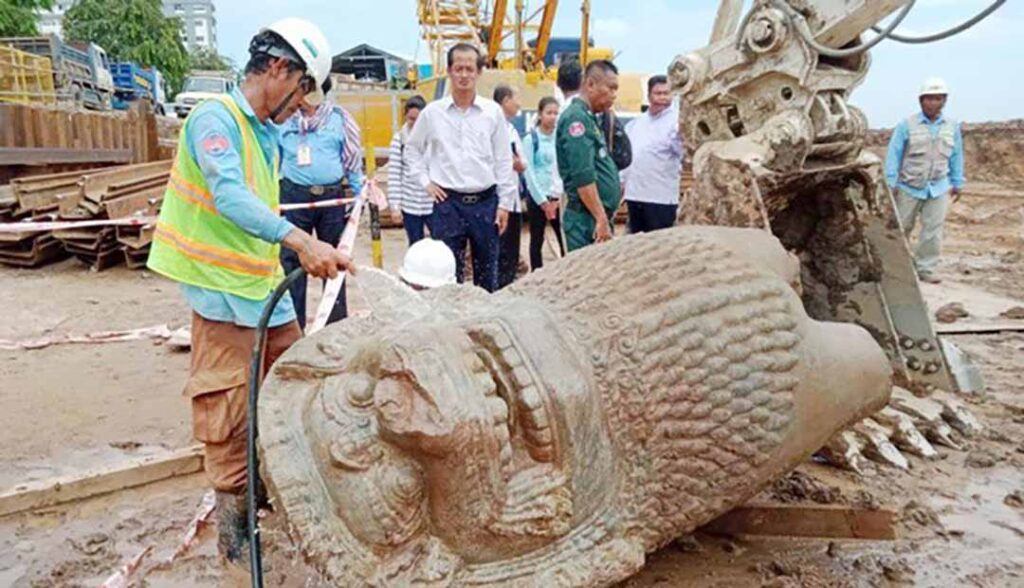Massive Ancient Lion Sculpture Uncovered in Cambodia
According to a report in The Phnom Penh Post, two pieces of a six-foot-tall statue of a lion were unearthed by mine-clearing experts preparing the site of a new groundwater reservoir along the Tonle Sap River.
The crew members excavated and cleared mines for a planned groundwater reservoir that will also be the site of Phnom Penh’s sixth water pumping station. It is located along the Tonle Sap River in front of the Council for the Development of Cambodia, according to Ratana.
After digging the soil up to 4 m underground lion statue was discovered, separated into two parts. At the National Museum, the Ministry will retain it, “he added.
Ratana said it is not CMAC’s duty to care for the statue, so the organization will leave it to the proper authorities to preserve it.
The director-general for tangible heritage at the ministry, Hab Touch, told The Post on Tuesday that he had not seen the statue yet. A press release he received said the statue resembles the lion statue at Wat Phnom.

But Touch said: “I don’t think it’s a lion from Wat Phnom because that lion is large. Its location means there must be something there like a bridge.”
Phnom Penh Department of Culture director Chum Vuthy told The Post on Tuesday that the ministry hasn’t studied the statue yet.
“This matter should be brought to the museum and the Ministry of Culture and Fine Arts, which took this statue to study it. There is an experiment center in the museum,” he said.
National Museum director Chhay Visoth told The Post that he cannot make any assumptions about which era the stone lion was made in because experts needed time to check the composition of the ancient stone.
“We cannot make assumptions about the lion that we found during mine clearance for the reservoir plan because we don’t have any connections regarding this statue.
“Normally, we can know the date of an artifact by identifying other things around it,” he said.
Viosth said it’s suspected that the lion was created at the same time as Wat Phnom or sometime after Cambodia was a French protectorate.
He said the statue also could have been taken from other areas such as Angkor.
“We suspect that it could have been from the Bakheng Mountain area because its height is 2m. We need time to study and date it,” he said.




